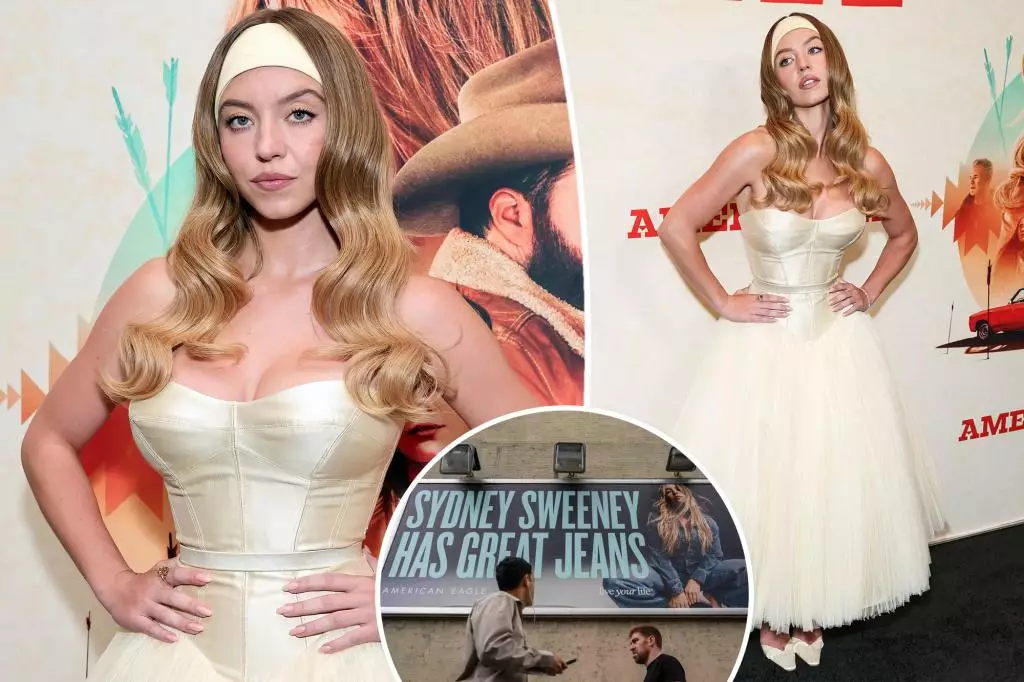Fashion is often heralded as a language that tells stories without words, yet it remains one of the most subjective and scrutinized forms of self-expression. Sydney Sweeney’s recent appearance at the “Americana” premiere exemplifies this complex dynamic. While her choice to wear a custom, vibrant butter yellow gown demonstrated a bold willingness to stand out, the harsh social media responses reveal a deeper struggle with identity and societal expectations. Her ensemble — a high-shine corset top paired with a tulle skirt and complemented by a matching headband — was undeniably unconventional. Instead of celebrating her uniqueness, many critics seized the opportunity to mock, spotlighting her fashion as a supposed misstep.
This reaction underscores how public figures are often trapped in a binary of approval or disdain, with little room for nuance. Sweeney’s stylist and the actress herself seem to have prioritized self-expression over mainstream appeal, yet the backlash reveals a persistent bias against deviation from traditional glamour. Fashion, in this context, is not just about aesthetic choices but also about navigating scrutiny and maintaining authenticity in the face of it. The overly critical comments, ranging from personal insults about her “genes” to playful jabs at her political stance, expose the double standards and polarized perceptions that celebrities contend with daily. It’s a reminder that true confidence involves embracing the discomfort that comes with public judgment.
The Power of Intent and the Effect of Controversy
At its core, the controversy surrounding Sweeney’s look and the American Eagle campaign is a testament to how powerful branding and messaging can become when intertwined with personal identity. The retailer’s “Genes are passed down” slogan aimed to champion body positivity and diversity, yet it became tangled in a web of misinterpretation and meme-worthy mockery. This dissonance suggests that even well-meaning campaigns can backfire when societal perceptions are so heavily influenced by appearance and preconceived notions.
Sweeney’s fashion choices might have been motivated by a desire to challenge norms and command attention, but the intense social media reactions demonstrate how easily dissent can overshadow intent. It raises questions about the responsibility of both celebrities and brands in shaping public discourse — is it enough to promote confidence, or must they also navigate the minefield of online outrage? Ultimately, this episode exposes the superficiality that often dominates celebrity culture, where a daring gown or a controversial campaign can overshadow genuine artistry or message.
Rather than succumbing to the negativity, Sweeney’s appearance invites us to reconsider our standards of beauty and fashion. If anything, her willingness to appear in a look that defies convention is a bold statement that authentic self-expression isn’t synonymous with perfection but with courage. As critics continue to roast her choices, what remains clear is that fashion’s true power lies in its capacity to challenge, provoke, and inspire conversations that transcend appearances.

